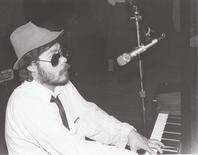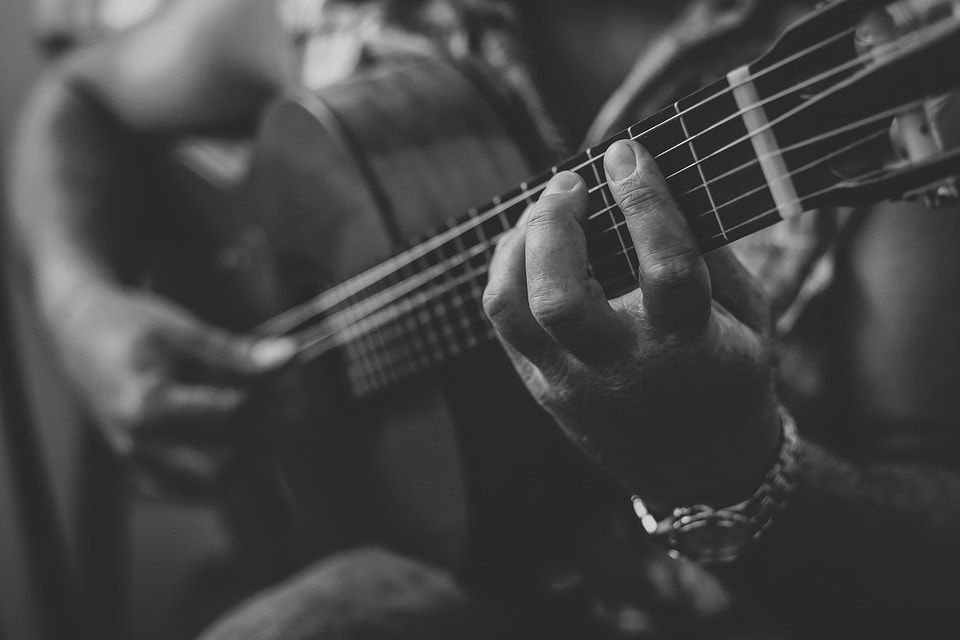|
8/22/2017 Blue Gardenia by Steve YoungBlue Gardenia George and Mary Lou's room on Court Street in downtown Barre was small, with a low ceiling, and unless the windows were wide open, there was no ventilation, which meant that you could levitate just by sitting down amongst us and breathing in the smoke. We were passing around a bottle of Tequila and George's corncob pipe the night George tried to teach me the chords to "Blue Gardenia." I was no musician, not like George, anyway. My guitar was a cheap Yamaha, with strings so far off the neck it was hard to do bar chords and my uncalloused fingers ached all the time from trying. George's guitar was one of the best that ever was made or ever will be: a 1948 Martin D-35 steel-string, with a light honey-colored front and a rosewood neck, strips of Mother-of-Pearl between the frets, strings that sang if you brushed your fingers against them, even in passing. George received the Martin on his sixteenth birthday, a goodbye present, you could say, from his father, a professor of ethnomusicology at Temple University in Philadelphia, the city where George grew up. Two months after George's birthday, his father put a bullet through his brain with a pistol no one knew he owned, and left a note about a mistress no one knew he had. George dropped out of high school soon after and hitchhiked aimlessly across the country. He showed up in our midst one summer later, a tall, skinny kid with long, finely-textured blonde hair and just the very beginnings of shagginess around his chin and sideburns. His body was wracked back then by a nervous vibration, an electric, adolescent hum which seemed to originate just below the surface of his skin. He had big hands but they were surprisingly supple. They played jazz and bluegrass and old timey string music, melodies with names like "Barbara Ann" and "Melinda" and "Black Mountain Rag." Simple tunes which grew more complex as he played them the third, the fourth, the fifth time. His father was a Woody Guthrie scholar and George grew up listening to the scratchy 78s Woody made in the 1930s and 40s, as well as those of Leadbelly, Blind Lemon Jefferson, Robert Johnson. George said they were solitary men with no roots and no futures, who didn't play to entertain but to keep from doing something far worse with their lives. I tried to learn some of the tunes written by these rambling men revered by George and his dead father, but I wasn't good at it. George got impatient trying to teach me and frequently took off on his own. I sat embarrassed but mesmerized by his hands, while his face kept its impatient, distracted look, like he was boring himself. He could play very fast. His fingers would fly until they started to whirl; until, it seemed to my pot-fogged brain, they were dancing. On the jazz and bluegrass tunes he used a medium flat pick, between the thumb and forefinger of his right hand. But on the blues and mountain tunes he clenched the flat pick between his teeth and finger-picked with the thumb and first three fingers of his right hand, pulling and releasing the strings over the soundboard in concentric circles of small movements. It seemed to me that those fingers, so light and facile, pulling and tapping and tugging with such natural grace, could be the hands of a surgeon, a diamond cutter, a safecracker, an anything. And the opaque, dreary world that was my own life that summer seemed in those moments something more and something less. Mary Lou Demers, George's girlfriend, was born and raised deep in the boons, all the way out in a tiny corner of the world called East Hardwick, Vermont. She was exceptionally pretty -- short and slightly chubby with a small, moon-shaped face, and a wistful smile both sweet and sad, the first brown-haired girl with blue eyes I'd ever met. She also had a beautiful, husky speaking voice, almost like an old woman's, the kind of voice that in a teenage girl sounds both tough and vulnerable. Mary Lou loved George with an intensity I envied and admired but like me, she had no ear for music. So while George tried to show me how to form the ninth and thirteenth chords to play "Blue Gardenia," she fell asleep on the couch behind him and gently snored. As he tried to get me to contort my fingers into the right positions, he told me that the most famous recording of the song was by Nat King Cole. But his father told him that the best version was by Dinah Washington. Cole’s voice was always smothered by all those sappy strings, he said. So was Dinah’s – except for the one and only session in her career when she got to sing with some of the best jazz studio musicians in the business: trumpeter Clarke Terry, pianist Wynton Kelly, trombonist Jimmie Cleveland, guitarist Barry Galbraith. “They always talk about Billie Holiday, what a fucked-up tragic figure she was,” George said. “But Billie always got to sing with the best musicians. She was treated like a queen. She never had to sing commercial crap like Dinah or Ella or Sarah Vaughan did for most of their careers. And Dinah died at a younger age than Billie did – people don’t know that -- not from heroin, but from diet pills, booze and Bennies. Billie always had that white gardenia in her hair, but Dinah sang about the blue one.” Mary Lou had fallen into a deep slumber and the only light was from a candle on the other side of the room and the ember from the cigarette in George’s mouth. Clearly the night was drawing to a close. He strummed a few chords without saying anything more. Then he said in a quiet voice, “I think my father would have been proud of me. Proud that I’m a musician, that I chose that road.” “Sure he would,” I said. It was the first time he’d ever talked to me about his father. “Not every father would be but I think he would’ve been.” George disappeared forever a few days later, toting only his Martin is what I heard. The following summer Mary Lou received a postcard from George from somewhere along the coast of South Carolina. There was a picture of the statue of Iwo Jima on the front. "I'm in boot camp," he wrote on the back. "It's not as bad as you think." A few weeks before, I'd started at the granite quarry. I hated the quarry at first, hated everything about it: the noise, the dust, the danger, the beer-bellied men, one or two with Mohawks beneath their yellow plastic hard hats. They laughed at my pimples and my long black hair, called me "Shirley" and "Agnes," and mimed sodomizing me when I leaned over. Getting my union card was like receiving a death sentence. But after a while, I cut my hair. I married the first girl in a bar who showed an interest in me. I was a virgin on our wedding night. Fortunately, she wasn't. We have three kids now. It's a funny thing about "Blue Gardenia." There are two or three chord fingerings that I've never forgotten. Even today, whenever I pick up my old Yamaha, which is rare, they're the first and usually the only things I play. Strangely, my fingers go automatically to their proper places on the strings to form those dense, complicated chords. I feel a sense of accomplishment in playing them. And although I'm not a jazz fan, and know nothing of the music, these chords give me a feeling of sophistication, of superior knowledge, that nothing else in my life does. But I never play for long. My fingertips get sore and my mind wanders and I think of George, remember his restlessness and how nothing ever satisfied him. Not the beauty he found around him nor the beauty he created himself.  Bio: Steve Young has an MFA in Fiction from Vermont College of Fine Arts. He has published thirteen previous short stories including in recent issues of the Saturday Evening Post, The Wild Word, and Woven Tale Press. Two of his stories have been nominated for the Pushcart Prize and BASS. Young grew up in Vermont and now lives and writes in Albuquerque, New Mexico. He has been a journalist for most of his career. Comments are closed.
|
AuthorWrite something about yourself. No need to be fancy, just an overview. Archives
April 2024
Categories |

 RSS Feed
RSS Feed
